Grape growing and winemaking are characterized by an intimate knowledge of the earth, the environment, and how to get the most out of the relationship between vineyard and land. The Quintessa Pavilions, the new tasting house and visitor’s center for Napa Valley’s Quintessa Estate Winery, embodies this concept in a design that is never far removed from the stunning, picturesque environment in which it resides. It was designed by San Francisco architecture firm Walker Warner Architects, and is an example of building design that choses the relationship to its site over the exploitation of high design.
The Pavilions are situated atop a prominent ridgeline, carefully placed near a grove of oak trees and oriented in a way that exemplifies its connection to nature. Every view in and out of the Pavilions are marked by pristine scenery and a reminder that the reason people are there is because of the grapes, and because of the respect the winemakers have for the earth that provides them with not only the pleasures of fine wine, but their livelihood as well.
In an attempt to provide private and personal wine tasting experiences, the Quintessa Pavilions are broken into a series of small 250-square-foot structures that each contain room for a small group tasting. These structures are connected with a series of natural paths and low rock walls, and are strategically placed within the 280-acre landscape so as to provide the most obvious and intentional connection to the surrounding vineyards.
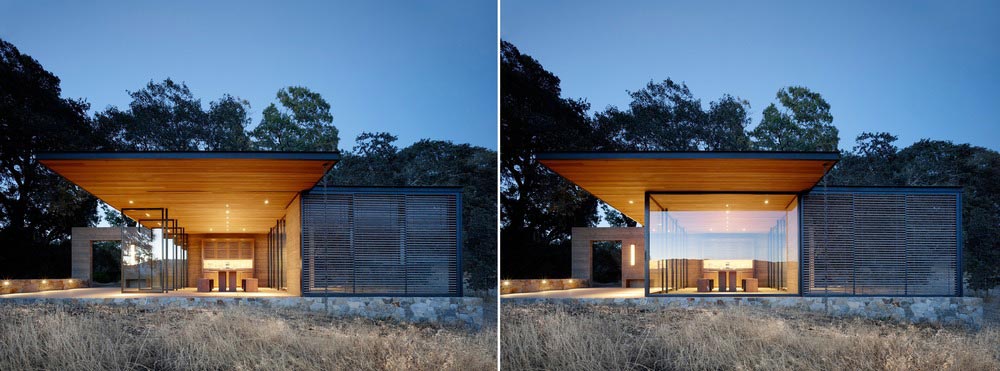
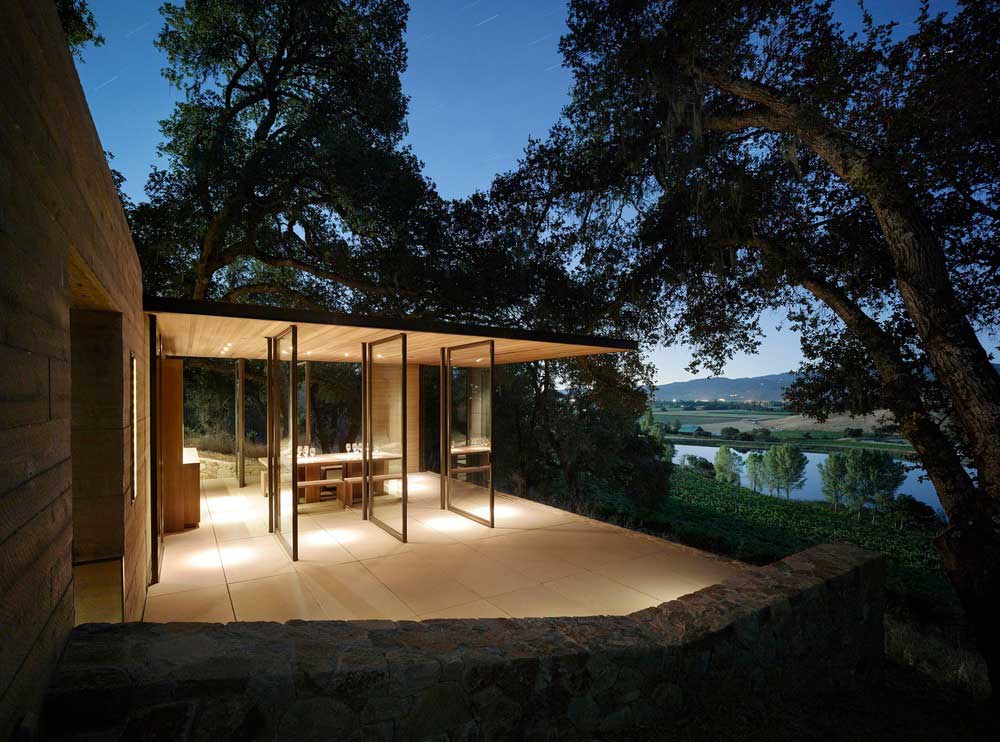
The structures are composed of rough board-formed concrete walls that give them a distinct natural aesthetic, and do well to mimic the rustic nature of the winery and the surrounding landscape. Certain pavilions break this trend, and are made up of a steel framed skeleton infilled with wood boards and panes of glass. Each pavilion faces an important view, and never obstructs the experience of peering over a sprawling vista of vines, fences, tractors and sunsets.
Walker Warner Architects used a very light touch when designing the new Quintessa Pavilions, being careful not to overthrow the powerful nature of the vineyards and creating architecture that gave back more than it took. There is an inherent symbiosis and mutual respect between structure and site, a fact that is never lost on those who wander the grounds with their heads on a swivel in amazement of one of the most beautiful examples of
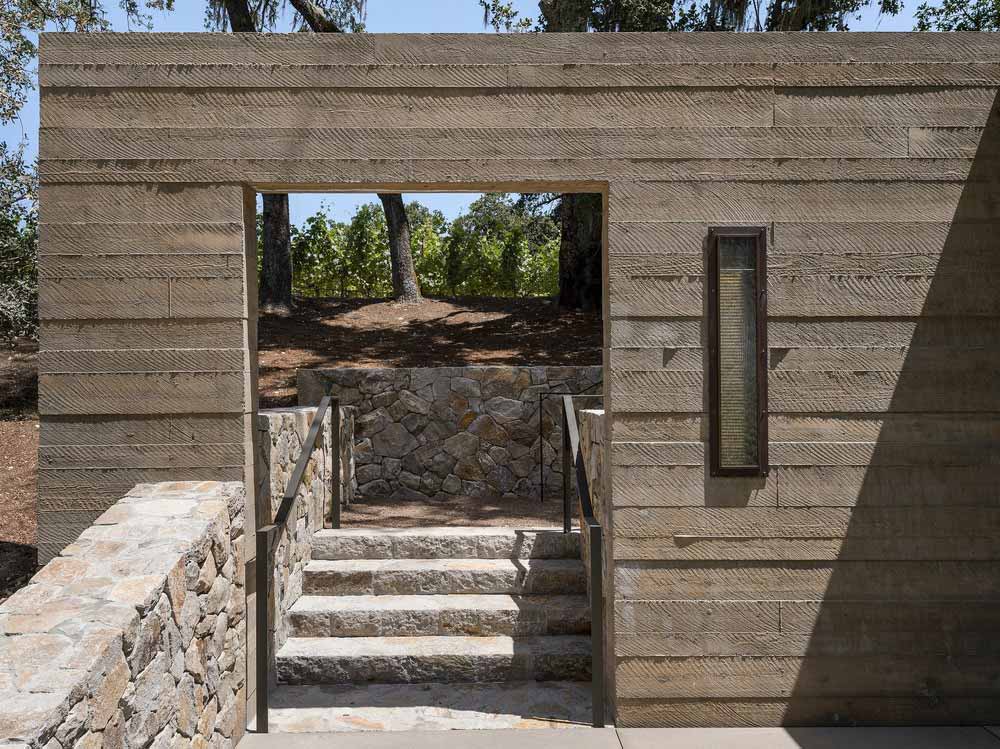
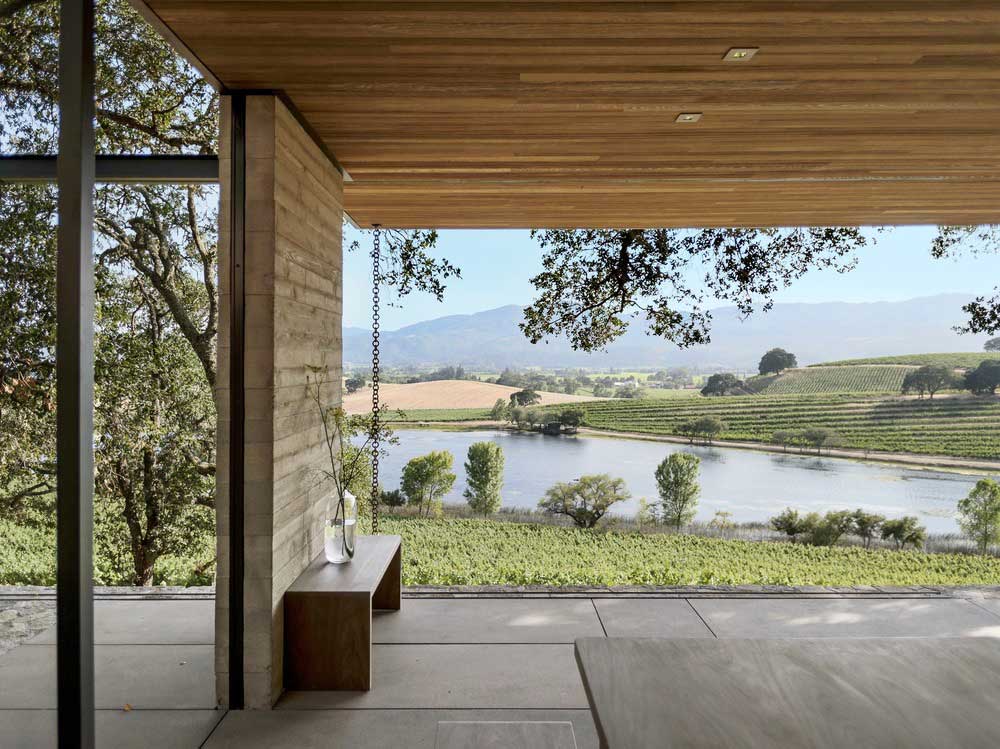
Architects: Walker Warner Architects
Photography: © Matthew Millman

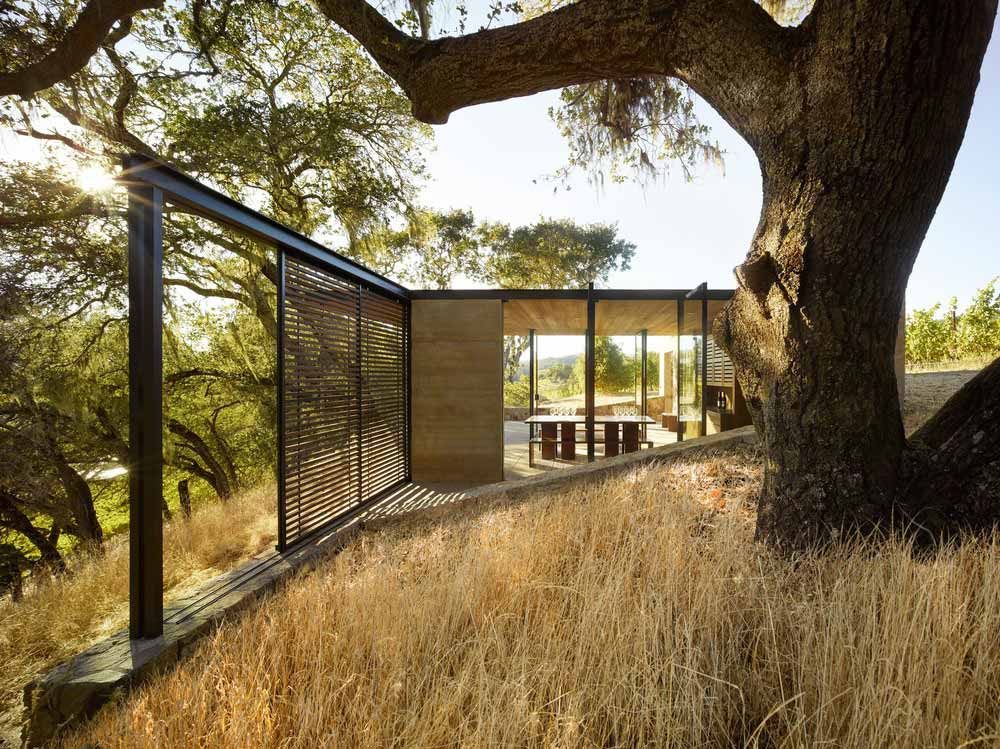















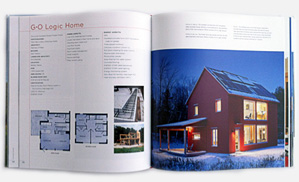
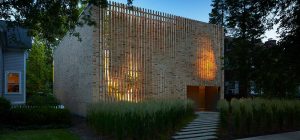




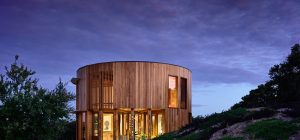




share with friends